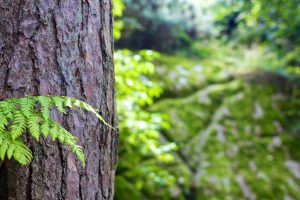
written by Nal Tero, 3rlt board member
In a growing stand of trees, most of the drama goes on above our heads. There is constant interaction among the trees, as each competes for a piece of canopy space. Looking at the crowns of forest trees, you can read the story of how the forest is developing. But in the summer when the leaves are out, if you look up all that you’ll see is a mass of green. Winter is the time to go out in the woods and identify the trees you see.
Of course, seeing the trees without the leaves presents another problem: How do you tell what kind of tree you are looking at? Evergreens are no problem, of course, because they look the same at any time of year. Some kinds of deciduous trees are easy too – it’s hard to mistake a paper birch for anything else. But other types can be hard to identify when all you are looking at is a tall grey trunk with branches high overhead. Recently I was out on a walk with some friends, helping find sugar maples for them to tap. We did a lot of standing, heads tilted back, trying to tell red and sugar maples apart. There was even one ash tree that would have had a tap in it if we hadn’t taken a second, closer look.
3 markers to look for when identifying the trees you see in the winter:
1. Look at the bark of a tree. This is the easiest to see but also the least definitive of tree characteristics. Certain trees do have very distinctive bark that makes identification easy: the paper birch and the ash are good examples. But others are not so easy. Different species of maple are difficult to tell apart by their bark, and young black birch and black cherry can be very confusing. Use the bark as your initial screening in identifying forest trees, picking out the obvious ones before looking at other characteristics to figure out the harder trees.
2. Buds are one of the most useful features for identifying trees. By looking at their shape, size, color and arrangement on the branch, you can usually make a positive identification of a tree. Buds are the best way to tell sugar maples apart from red maples, for instance.
A full discussion of identifying northeastern trees from their buds would be too long to print here, but the Maine Forest Service publication, “Forest Trees of Maine,” is an excellent resource for this (especially the newer edition with photographs instead of drawings).
In a full-grown forest it can be hard to find a bud close enough to the ground to examine. Rather than trying to identify an eighth-inch bud fifty feet above your head, you can look at the tree’s branching pattern instead. All trees display either opposite or alternate branching. In opposite branching, smaller branches appear of a larger one in pairs, one on either side. In alternate branching, as you might expect, branches appear individually, first on one side of the large branch, then on the other. By learning which trees display opposite or alternate branching you can often narrow down the possibilities of what a tree might be.
3. A less cut-and-dry piece of evidence is what botanists sometimes call “branch architecture.” These are simply the distinctive patterns of growth that different trees display. It’s hard to describe exactly, but with practice, for example, you can learn to distinguish the upright, thinner branching of a maple from the more twisted and thicker pattern of an ash.
While it might lead to a little head scratching, identifying trees in the winter will help you develop your naturalist skills. And if you do find one you’re just not sure of, make a guess, remember it, and come back in the summer to look at the leaves and see if you were right!
Where’s your favorite place to walk among the trees? Let us know on our Facebook page.
Related on 3rlt.org:
Spotlight on the Sensational Yellow Bellied Sapsucker
Go Out and Play! Fun Outdoor Winter Activities to Enjoy Now
Spending Time in Nature: 4 Reasons Why It’s Important
photo of trees via pexels.com
